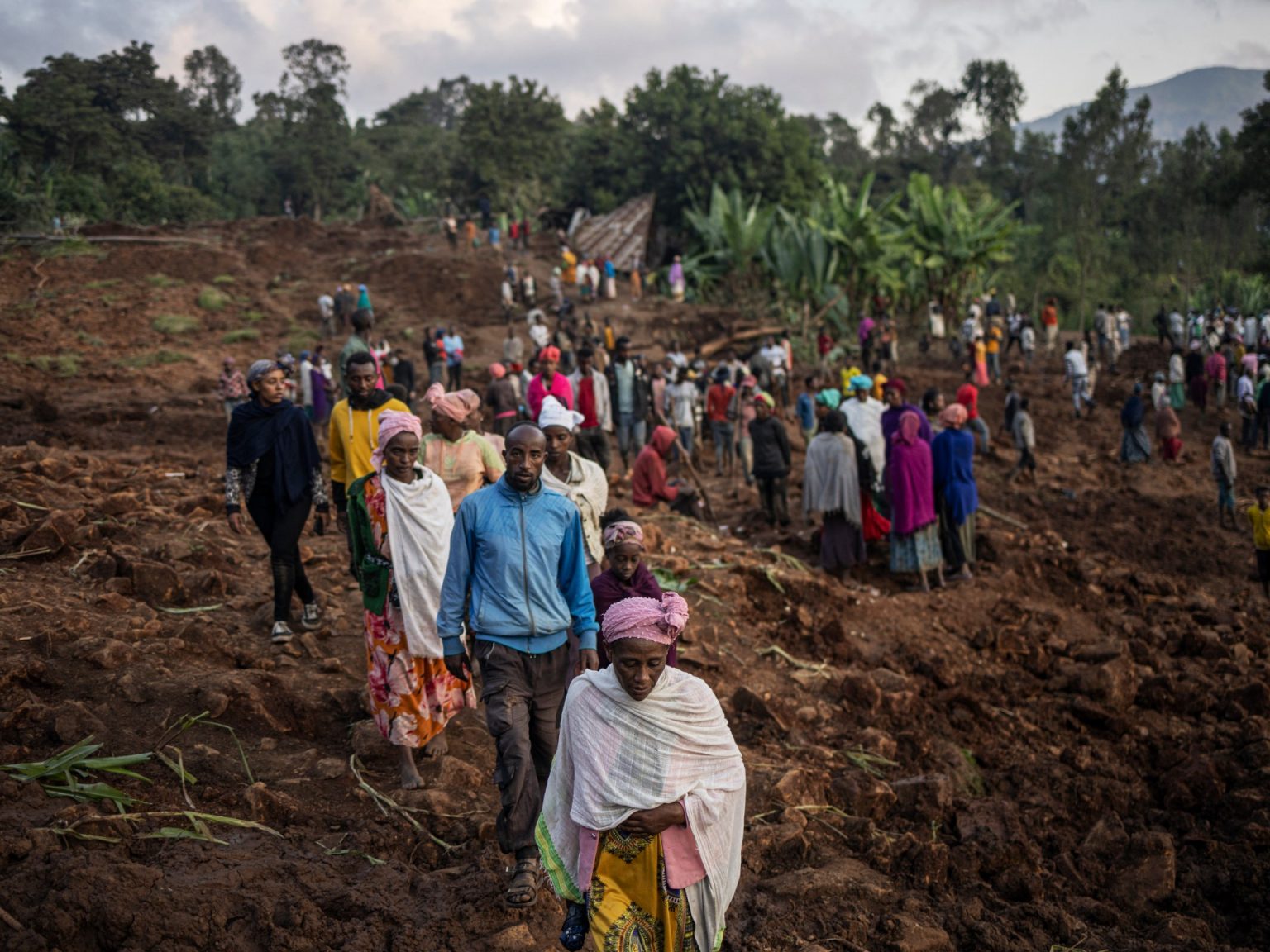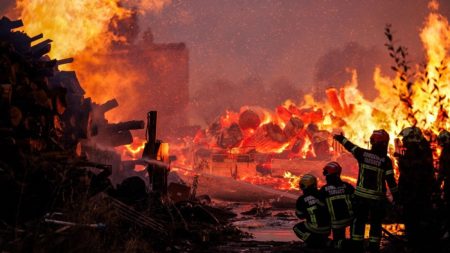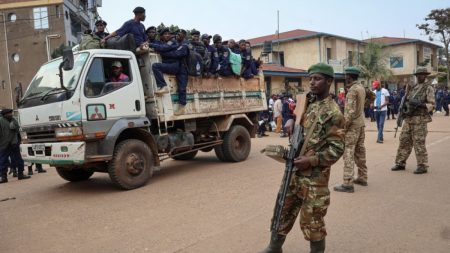The recent deadly landslides in southern Ethiopia have claimed the lives of 257 people, with the death toll expected to rise as high as 500 according to the United Nations Office for the Coordination of Humanitarian Affairs (OCHA). The first landslide occurred in the Gofa Zone due to heavy rains on Sunday and Monday, while the second landslide occurred as those attempting to rescue victims were engulfed. Search teams have been deployed to the area to try and rescue any survivors and recover bodies from the mud. More than 15,000 people have been affected by the landslides and need to be evacuated from the area.
Ethiopian Prime Minister Abiy Ahmed is set to visit the remote site of the landslides on Friday to assess the situation and provide support to those affected. Images from the scene show residents mourning over the bodies of victims wrapped in shrouds as they are recovered from the mud. Rescue efforts are ongoing, with people using hand shovels and their bare hands to dig through the mud in the hopes of finding survivors. Landslides are a common occurrence during Ethiopia’s rainy season, which typically lasts from July to mid-September.
The devastating landslides in southern Ethiopia have left communities in mourning as the death toll continues to climb. The region’s remote location and challenging terrain have made rescue efforts difficult, with search teams working tirelessly to recover bodies and provide aid to survivors. The government has declared a state of emergency in the area to mobilize resources and support for those affected by the disaster. Local residents are coming together to assist in the rescue efforts, using whatever tools they have at their disposal to help in the recovery operations.
The landslides in southern Ethiopia serve as a tragic reminder of the dangers posed by natural disasters, especially in vulnerable communities. The impacts of the landslides extend beyond the immediate loss of life, with thousands of people now displaced and in need of shelter, food, and medical assistance. The government, along with international aid organizations, is working to provide relief to those affected and to ensure that the necessary resources are in place to support recovery efforts in the region. As the rainy season continues, there is a heightened risk of further landslides, underscoring the need for ongoing vigilance and preparedness in the face of such disasters.
The response to the landslides in Ethiopia highlights the critical role of coordination and collaboration among various stakeholders in disaster management. As search and rescue efforts continue, it is essential that resources are effectively deployed to reach those in need and to provide timely assistance. The involvement of local communities in the response efforts demonstrates the resilience and solidarity of the Ethiopian people in the face of adversity. Moving forward, efforts must be made to strengthen early warning systems and disaster preparedness measures to mitigate the impact of future disasters and protect communities at risk.
In the wake of the landslides in southern Ethiopia, the international community has expressed condolences and offered support to the Ethiopian government and people. Humanitarian aid organizations are working to provide assistance to those affected by the disaster, including medical supplies, food aid, and temporary shelter. The response to the landslides underscores the importance of global solidarity in times of crisis, as countries come together to support each other in times of need. As recovery efforts continue, there will be a continued focus on rebuilding communities, providing assistance to the displaced, and ensuring that lessons are learned to better prepare for and respond to future disasters in Ethiopia and beyond.













